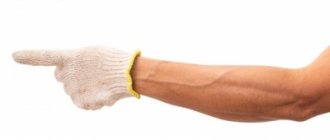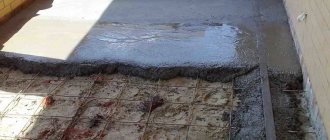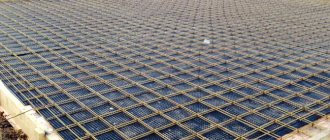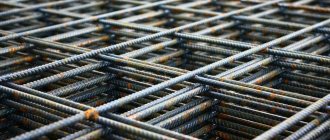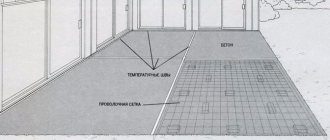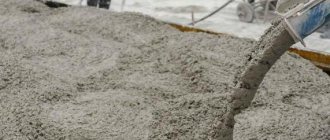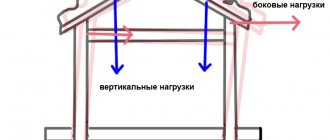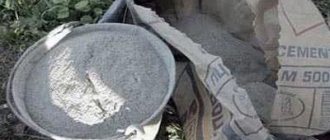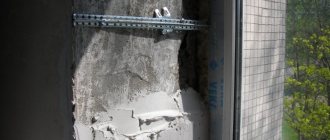During a major renovation, there is often a need to install a perfectly flat floor, which is necessary if laminate, linoleum, parquet or tiles were chosen as the covering. In this case, there is only one way out - a rough concrete screed. Unfortunately, this solution is not without its drawbacks. One of its main disadvantages is instability to compression and expansion, its consequences being the appearance of cracks. To avoid defects, metal mesh reinforcement was previously widely used. However, thanks to new technologies, not long ago a worthy alternative appeared - a semi-dry screed with fiber fiber. This material makes it possible to significantly increase the floor's resistance to loads: both static and dynamic.
What is fiber fiber?
This is a reinforcing additive for various building mortars and mixtures - thin (from 20 microns) but long (from 1 mm) threads that can be made of basalt, polypropylene, steel or fiberglass. If we are talking about screeds, then the undisputed leader of this “construction company” is polypropylene fiber. The reasons for its popularity are low cost, lightness, and the absence of a corrosion threat.
If the sand-cement mortar is prepared correctly, then the reinforcing fibers distributed throughout the entire thickness of the material give the finished product unique strength characteristics. The use of fiber fiber depends on its size. The shortest shavings are used in mortars for brickwork, the middle ones are used for floor screeds, the longest ones are used in road construction and for hydraulic structures.
Fiber reinforcement.
Due to the ability of fibers to mix freely, they are able to form a homogeneous mixture together with concrete, reinforcing it throughout its entire volume. Therefore, fiber fibers are used in the construction of floors of industrial buildings, hydraulic structures, at facilities where traffic flows and in other structures, parts of which are subject to increased compressive, vibration, and shock loads. In addition, the use of the materials in question is effective in the production of concrete and foam concrete block elements, compositions for shotcrete, plastering, and repair work.
In most cases, the volume fraction of fiber fiber admixture in concrete is about 0.1%, which is equivalent to a mass flow rate of 0.6-0.8 kg per cubic meter. If it is required to achieve increased ability of the product to resist splitting, the proportion of fiber fiber can be increased. When adding 1 kg of polypropylene fiber, the composition will contain approximately 70 million fibrous elements. Thanks to this, the adhesion of the layer to the subsequent coating (for example, tile) increases. The high reinforcing ability of fiber fiber allows you to avoid the use of a steel wire mesh when reinforcing floor screeds up to 10 cm thick. At the same time, the work of unloading and laying the concrete composition is accelerated and facilitated, and its consumption is ensured more rationally. In leveling mixtures and plastering compositions, the use of polypropylene-based fiber is effective. This substance is characterized by resistance to aggressive chemical compounds, which makes it ideal for reinforcing cement-based materials.
The use of fiberglass in floor screed.
Fiber fiber also allows you to significantly save on floor screed. Let us give the following data: per 1 m2 you need an average of about 2 kg of polypropylene fiber, the cost of which will be less than 10 rubles. This amount is not comparable to the costs of redoing a low-quality screed, which may occur if cracks appear. Additional materials, work, and operation of equipment will cost hundreds or thousands of times more! In addition, one should not forget about savings due to the exclusion of a metal mesh from the structure of the cement floor, which also serves the function of preventing cracking. The use of fiber fiber in a semi-dry screed, along with increasing productivity and optimizing the cost of money, also allows for better quality indicators of coatings compared to those reinforced with metal mesh.
So, let’s summarize the advantages of using fiber fiber additives for reinforcing concrete-based structures.
- Reducing cracking due to shrinkage processes, improving the quality of concrete.
- Increasing the density of the structure under vibration loads.
- Improved resistance to low temperatures.
- Increasing the ability of the coating to resist penetration of liquids and destruction from aggressive chemical compounds.
- Reducing work time by eliminating labor costs for installation of reinforcing structures.
- Improving the strength characteristics of the coating and impact resistance.
- Facilitation of surface treatment.
- Possibility to refuse the use of plaster reinforcing mesh.
- Increased resistance to abrasion.
- Improving the adhesion of the concrete composition to the surface, which ensures better quality of coating on inclined planes.
- Reduced weight of the structure due to the absence of additional metal reinforcing components.
Read with this
- How long should a floor screed dry?
- Floor screed thickness
- Installation of beacons for floor screed
- Floor screed mortar
- What is a semi-dry floor screed?
- Technology for creating a screed on a wooden floor
- How to make a mortar for floor screed, the main proportions of cement and sand per 1 m3
- Screeding the floor yourself: how to properly prepare the floor and how to fill it
- Leveling the floor according to beacons
- Do-it-yourself dry floor screed: let’s figure out how to do it right
No disadvantages, only advantages?
The popularity of this material is explained by its characteristics.
- Reinforcing fiber gives the screed bending strength, so the coating is not afraid of loads from above, shrinkage of the building, or heaving of the soil.
- Randomly located inside the concrete mixture, the material prevents its further delamination during operation, since moisture is distributed evenly in the screed.
- Fiber does not give a chance to microcracks that form in large numbers during the setting of ordinary concrete mixture in the first hours (5-7) after pouring.
- It’s not for nothing that a semi-dry screed with fiberglass is called that: 20% less water is required in the solution, and this volume guarantees a faster increase in strength of the screed.
- This material in the mixture guarantees the frost resistance of concrete. Fiber fiber screed can withstand many cycles of freezing and subsequent defrosting.
- Fiber fiber is not susceptible to corrosion. The same as the abrasion of concrete during a long service life.
- It is possible to use different amounts of material depending on the purpose pursued - to facilitate work or increase the strength of the screed.
- Fiber fiber reinforcement is 30-40% cheaper than the usual “classics” with metal mesh.
- The rather short drying time of the screed is not the last advantage of this option.
Another advantage of the presence of fiber fiber is less absorption of potential moisture that gets onto the surface of the concrete. There are no downsides to high-quality material. If we talk about polypropylene fiber, during the production of which serious violations of technology were committed, then it can begin to release harmful substances. If you purchase this type of fiber in a store, you must require a certificate proving the safety of the building material.
We insulate the floor
An important element of the screed is the insulating layer; it is made of a substance with low thermal conductivity. Various types of materials are used as such elements: polystyrene foam, expanded clay, mineral wool or gravel-sand backfill.
Thermal conductivity is a physical and technical property of a material, which is characterized by the ability to conduct thermal energy. Accordingly, the lower the thermal conductivity, the better the substance retains heat in the room.
- Extruded polystyrene foam - the material has low thermal conductivity. The plate consists of granules that are filled with carbon dioxide. Expanded polystyrene is divided into grades depending on density. To insulate the floor under the screed, the PSB-S35 or PSB-S50 brand is usually used.
Extruded polystyrene foam sheets
Brands of expanded polystyrene are designated by the letter combination PSB, PSB-S35 corresponds to a density from 25.1 kg/m3 to 35 kg/m3, PSB-S50 - from 35 kg/m3 to 50 kg/m3.
An important advantage of expanded polystyrene is the light weight of the material, so it is advantageous to use it to raise the floor level. The weight of one square meter of polystyrene foam 20 cm thick will be only 7.5 kg, so with its help you can significantly raise the level of the base without a critical increase in the load on the load-bearing elements of the floors. The material is also easy to work with, it is easy to cut, the surface can be scratched (creating grooves for wires, pipes and other communications.)
- Mineral wool is an insulating fibrous substance; the concept usually includes several varieties (stone wool, glass wool and slag wool). In most cases, stone wool (basalt) is used for semi-dry screed; it is produced from the melt of volcanic rocks. Provides a high degree of sound and heat insulation. To be used as a semi-dry screed, the material must have a certain level of density in order to withstand mechanical loads. The density of the material must be above 125 kg/sq.m.
Mineral wool
Mineral wool, when exposed to water, loses its thermal insulation properties, so a prerequisite for using the material under the screed is the installation of a waterproofing layer between the cement-sand layer and the insulation.
- Expanded clay is an environmentally friendly insulation option. Fine-grained expanded clay backfill is used. The porous structure of the granules ensures low thermal conductivity and good sound insulation. The material is made from baked clay - it does not contain formaldehyde resins and other harmful impurities. When choosing expanded clay backfill, it is important to pay attention to the size of the granules. Usually a fraction of 1-5 mm is used.
Filling with expanded clay sand before laying the screed
Alternative dry backfill options include vermiculite and perlite. Both materials are also natural and made from mineral raw materials.
- The sand and gravel mixture is 20% sand and 80% gravel. The material is extracted by quarrying and serves as backfill. It cannot be used to greatly increase the height of the floor due to its significant weight. Per square meter with a layer height of 20 cm there will be 320 kg of material.
Types of fiber
As already mentioned, there are several types of this material, they differ in both characteristics and price.
Basalt
This is a fiber fiber whose thickness is 20-500 microns, length - from 1 to 150 mm. It is obtained by melting basalt rocks at a temperature of 1400°. This heavy-duty type is recognized as the best reinforcing material, however, as a rule, it is not used for floor screed. The reason is the inappropriateness of using basalt in this role, since there its outstanding positive qualities seem simply unnecessary.
Polypropylene
This polymer is widely used in construction and repair work. White fibers have a diameter of 15-20 microns and a length of 6-20 mm. Polypropylene improves the strength of concrete slightly, so it does not take part in the creation of massive structures, however, the material is quite suitable for plastering work, as well as for floor screed. The advantage of such fiber fiber is a high level of noise insulation.
Steel
The material used to make this type of fiber is high-carbon wire. Its diameter ranges from 0.2 to 1.2 mm, length - 5-150 mm. The “specialization” of steel fiber is reinforced concrete monolithic structures, runways and air terminal complexes, self-leveling, seamless floors. This is not the best option for screeds, the reasons for this are the low level of noise absorption, the appearance of local breaks (1-3 microns), and then microcracks. This happens due to the difference in thermal expansion coefficients.
Glass
The raw material for the production of glass fiber is zirconium. This is a thread containing several very thin fibers. Its thickness is 8-10 microns, length - up to 12 mm. The advantage of the material is its environmental friendliness, and it is not subject to corrosion or rotting. Fiberglass is used to reinforce lightweight concrete blocks and in the production of facing slabs, but plastering mixtures are its main purpose. For screeds, glass fiber is used extremely rarely due to its low strength. The fragility of the material makes it unsuitable for masonry mortars and monolithic products.
Thickness of the screed in the apartment
The subfloors in the apartment, for the most part, are made in the form of floor slabs. When carrying out repair work, people wonder whether the subfloors can withstand the additional weight of the screed and how thick it should be.
Let's make the calculation using the example of an apartment of 44 m²:
average weight 1 cu. m of concrete (with a reserve) is 2300-2500 kg, and the average weight of 1 m³ of cement-sand screed is 1800 kg. We determine the pouring area: multiply the area of the apartment by the height of the screed 8 cm - 44•0.08=3.52 m³. Weight of concrete screed: 3.52*2500=8800 kg. Weight of cement-sand screed: 3.52•1800=6336 kg. Load on the floor slab: with concrete screed 8800/44=200 kg/sq. m², and with cement-sand screed 6336/44 = 144 kg/sq. m². As a rule, for hollow core slabs with a thickness of 220 mm, the permissible load is 450 kg/sq. m² (there are both 600 and 800 kg/sq. m²). Thus, when pouring 7-8 cm of screed, nothing threatens the floor slab.
From the above, we find that the optimal thickness of the screed for an apartment is 7 - 8 cm. Of course, these are average values, as there are a number of additional factors, such as the height of the ceilings, the height of doorways. The floors in the apartment are sometimes made uneven, so for the kitchen and bathroom the height of the screed is specially lowered. They do this in case of a rush of water.
Fiber consumption
In this case, only 2 factors influence the quality of the solution:
- certain qualities of fiber: density, stretch, elasticity, etc.;
- the amount of fibers intended for 1 m3 of mixture.
Since polypropylene material is considered the leader of sympathy, the calculation will be correct only for it. The higher the quality characteristics of the fiber fiber, the less it is required for reinforcement. A larger amount of fiber minimizes the risk of cracks forming on the surface. Based on this, in order to achieve a certain goal, it is necessary to add the following amount of polypropylene to 1 m3 of solution:
- as an additive to improve plasticity - 300 g;
- to improve the strength characteristics of the solution - 500-600 g;
- to obtain maximum resistance to compression, tension, bending - 800-900 g.
Recommended numbers can be found on the material packaging. Exceeding them is not a good idea, as the unfortunate consequence may be cracking of the screed.
Semi-dry screed, what is it?
The solution for it is prepared from cement, sand, fiberglass, as well as a plasticizer and a small amount of water. This mixture deserves the epithet “wet” more, since it cannot be called liquid. The composition is poured along the beacons, then it is leveled. After the installation is completed, the solution is left to “mature” for several days, and after a week the floor covering - tiles - can be laid on the screed. A few weeks later - laminate, linoleum, parquet.
The semi-dry method is suitable for old houses where the floors are far from ideal, so the thickness of the screed in such apartments needs to be increased. It is also used for new buildings, where the quality of the foundation is quite good. Such a quick coating is used for “high-speed” repairs in cottages, industrial facilities, offices, and in buildings with thin floors. Greater strength is achieved if the solution with fiber fiber is laid on a reinforcing mesh.
The minimum thickness of such a screed is 40 mm. This value is enough to ensure durability and a good level of sound and heat insulation. The strength of the coating is 150-250 kg per cm2, the shrinkage is minimal - 0.2 mm/m.
What does it consist of?
The classic “pie” of this screed contains the following layers of “filling”:
- waterproofing;
- thermal insulation;
- reinforcing mesh;
- directly the screed body.
The first two layers are optional, but they can significantly improve the characteristics of the coating: both functional and performance. In the case of fiberglass, reinforcing mesh is also almost never used by home craftsmen.
For the role of a waterproofing layer, a regular polyethylene film is often chosen; its thickness is 100-200 microns. To install thermal insulation, they often resort to polystyrene foam (plain or extruded). To lay thicker screeds, use expanded clay.
A small amount of water is the only fundamental difference between a semi-dry screed and its wet variety. After it dries, no additional measures are required, as well as the purchase of self-leveling mixtures, because an almost ideal surface is formed, completely ready for laying the topcoat.
Pros and cons
Any construction technology cannot do without this duo. Semi-dry screed also has its advantages and weaknesses.
It is customary to praise first, so the positives come first. Among them:
- record speed of work, allowing you to “deal with” even a spacious country house in one or two days;
- the ability to continue repairs “on the job” the very next day, and there is no need for walkways/flooring;
- relative purity of the process, ensured by a minimal amount of water;
- full guarantee of good heat and sound insulation;
- negligible risk of “ubiquitous” cracks;
- strength against the background of low cost.
Now follows a tiny list of cons:
- difficulties awaiting a non-professional when preparing (stirring) the mixture, leveling, tamping;
- correct installation of such a thick mixture is impossible (difficult) without skills.
Pros of technology
Standard semi-dry floor screed differs favorably from other leveling technologies in that:
- Suitable for laying any coatings at no additional cost (no finishing leveling work is required).
- Demonstrates the best price-quality ratio (the cost of work is lower than the sum of the costs of a wet screed and self-leveling floor).
- Practically not subject to the formation of cracks and delaminations (subject to compliance with technological requirements).
- Reduces repair time. Despite the same time for complete drying as in the case of a wet screed, walking on the surface and doing plastering and other work related to the walls is permissible already on the 2nd - 3rd day.
- The process is much cleaner than laying wet screed. There are 2 reasons for this - the solution is not prepared on site (it is supplied there through a hose), and the finished screed does not require dusty mechanical grinding or installation of a self-leveling floor.
Materials, tools, equipment
Compared to the conventional process, semi-dry screed with fiber fiber looks more attractive - it is simpler. For work you will need to prepare the following materials:
- Portland cement M400 (M500);
- sand, preferably river sand, since quarry sand will have to be sifted and washed to remove clay;
- fiberglass;
- plasticizer, its replacement is liquid soap;
- damper tape;
- plastic film.
A master cannot do without some items, tools and equipment. You need to have on hand:
- painting strip (twine rubbed with chalk);
- guides - beacons;
- rule;
- construction pencil;
- roulette;
- level: hydraulic or laser (preferably the latter);
- concrete mixer;
- concrete shoes;
- large capacity for solution;
- trowel;
- trowel (trowel);
- bubble level;
- putty knife.
Do-it-yourself floor screed with fiberglass
Any novice builder can prepare a cement-sand mixture using fiberglass with his own hands.
Materials and tools
To install the screed you will need the following materials:
- cement grade M400;
- sand with a fraction of 2-3 mm;
- fiberglass;
- water;
- plasticizer
Hand tools required:
- laser level (or hydraulic level);
- roulette;
- tap;
- construction cord;
- rule;
- guide profiles for installation of beacons;
- spatula and trowel;
- level.
Power tools required:
- concrete mixer;
- trowelling machine.
Semi-dry screed
To construct the base for the finishing coating in modern construction, semi-dry fiber cement floor screed is most often used.
preparation of the base is carried out (cleaning from dust and dirt, eliminating cracks);
- to ensure water protection, a polyethylene film is laid;
- when organizing heated floors, a heating system is installed;
- using a laser level, find the maximum and minimum marks, after which the fill level is determined and beacons are installed;
preparation ends with the installation of damper tape around the perimeter of the room;
- for three minutes, cement and sand are mixed without using water in a concrete mixer with the gradual addition of fiber in small batches;
- at the next stage, add water and bring the mixture to working condition;
pouring is carried out from the far wall along the beacons, followed by alignment with the rule;
the leveled base is compacted using a trowel;
How does the work happen?
Semi-dry screed with fiber fiber requires certain preparation of the base surface. It is cleaned of construction debris and dust. Repair mortar is used to seal cracks in concrete. Rotten boards are replaced, small defects in the wooden floor are repaired using putty.
Preparation
Layers of hydro- and sound insulation are laid on the base. If you use rolled materials, then make an overlap of at least 150 mm, and an overlap on the walls of at least 150-200 mm. In private houses, as well as on the first floors of apartment buildings, thermal insulation work is often added. Along the walls that will come into contact with the screed, a damper tape is attached for additional sound insulation.
The next stage is determining the level of the screed. A zero line is drawn along the perimeter of the room on the walls, its height from the surface of the base is a meter and a half. Then, taking into account the unevenness of the base coating and the thickness of the screed, the line is moved lower - to the level of the future semi-dry screed.
Beacons are placed along the lines, the first of them is at a distance of 200-300 mm from the wall. The interval between them should not exceed the length of the rule. On the base, the guides are laid on cement mortar. An alternative is to make beacons from the same concrete as the future screed. In this case, the “luminaries” are made immediately before installation.
The process in a “section”
Further work proceeds as follows:
- Sand and cement (3:1) are poured into a concrete mixer, then the dry mixture is thoroughly mixed for 2-3 minutes. Then fiber is added in small portions, followed by mixing again after each portion. This is a mandatory condition, otherwise, when the entire volume of fiber is poured, it may turn into lumps, and they will have to be selected from the mixture and thrown away.
- The well-mixed dry composition is diluted with water in a ratio of 0.3:1, obtaining a paste-like consistency. You can also stir fiber in water and then add it to the sand-cement mixture. The readiness of the solution is checked in this way: a small amount of it is squeezed tightly in your hand. The ideal composition holds its shape perfectly, but there is no excess moisture on its surface. A plasticizer is usually added to the prepared solution.
- The mixture is placed on the base with a shovel, first at a level below the beacons. The solution is immediately compacted, so the assistants will not be a burden. Then a layer of mortar is again laid out on this compacted layer, but this time above the level of the beacons. After this stage, work is carried out differently: the screed is simultaneously compacted and leveled. If desired, the guides are removed, and the resulting seams are sealed and rubbed.
- After leveling, they begin to grout the coating with a machine. Concrete shoes are not a luxury here, but a means of transportation for the master. If the floor area is small, then it allows you to do this step manually - using a wooden trowel - using iron. However, these works require speed: it is imperative to complete them within an hour. Otherwise, the solution may set, which means it will refuse to compact. Therefore, to guarantee a high-quality screed, it is better to use a trowel.
- A polyethylene film is laid on the surface of the finished screed. The operation is done with an overlap, but the joints are not secured with tape. The next day (after 12 hours), the concrete is sprayed with water from a spray bottle.
What then?
After a day, the film is removed, and the protruding strips of the damper tape are cut off with a stationery knife. After 3-4 days, the installation of ceramic floor tiles begins. If a different finishing coating is chosen, wait until the screed gains the required strength. Linoleum is laid in 2-3 weeks. Laminate or parquet - after complete drying. This will take a month.
A semi-dry screed with fiber fiber gives a good chance to get a reliable floor for the finishing coating, “killing” the minimum amount of time. Another issue is the durability of the screed, in which polypropylene fiber plays the role of reinforcement. Its characteristics are not as outstanding as those of other types of reinforcing material.
To guarantee a long service life, it is better to choose another competitor - basalt fiber. This solution will allow you to change the floor covering in the future, but will not give the slightest reason to worry about the condition of the screed. However, the choice always remains with the owners.
You can get a closer look at the features of the operation called “semi-dry screed with fiber fiber” if you watch this video:
